- Author Matthew Elmers [email protected].
- Public 2023-12-16 21:49.
- Last modified 2025-01-24 09:17.
In October, the main news stories about the export of Russian arms covered not the deliveries themselves, but about export issues. In particular, the details and possibilities of execution of the contract for the supply of S-400 Triumph air defense systems to Turkey are still being discussed. At the end of October, information appeared about new US sanctions against companies in the Russian military-industrial complex, which could complicate their life. Also, a rather heated discussion in the media was caused by an article by DefenseNews, which, with reference to high-ranking Indian military personnel, reported that Delhi could refuse to cooperate with Russia in the framework of the project to create a joint Indian-Russian fifth-generation fighter aircraft FGFA due to “backwardness technologies.
The Turkish side is seeking from Moscow to transfer technologies for the production of the S-400 air defense system
Turkish Foreign Minister Mevlut Cavusoglu, in an interview with the local newspaper Aksam, noted that Turkey may refuse to purchase S-400 air defense systems in Russia if the parties fail to reach an agreement on their joint release. The Foreign Minister noted that Turkey urgently needs to acquire the S-400 to protect the country's airspace. "If the countries opposed to the Russian Federation do not want Ankara to acquire the S-400 complexes, they must present their options to us," Mevlut Cavusoglu said. In turn, Dmitry Peskov, the press secretary of the Russian president, noted that “contacts and negotiations at the expert level in the context of this transaction are continuing,” without delving into their details.
Recall that Moscow and Ankara signed a contract for the supply of four divisions of the S-400 Triumph air defense systems with a total value of more than $ 2 billion in September 2017. Negotiations between the parties took place in a very short time, they were based solely on personal agreements between Presidents Vladimir Putin and Recep Tayyip Erdogan (sources involved in this deal said that it was "purely political").
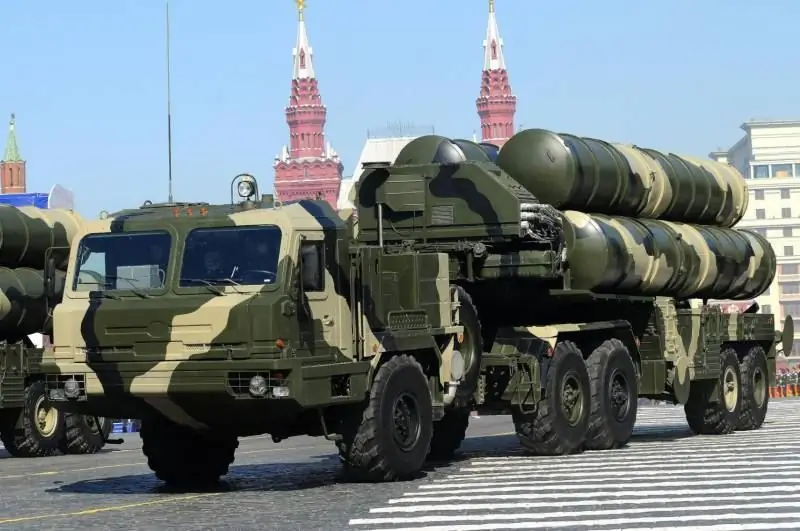
The newspaper "Kommersant" in the article "Make it there" quotes the words of several sources working in the field of military-technical cooperation. They note that the words of the head of Mevlut Cavusoglu were regarded by the Russian structures as an element of the political game. “We have signed a major contract, which contains all the legal subtleties and responsibilities of each of the parties,” said one of the newspaper's interlocutors. "It will not work just like that to break an already concluded contract." He suggested that the statements of the Turkish Foreign Minister are provoked by the story with the prospects of supplying the same anti-aircraft missile system to Saudi Arabia. Against the background of the emergence of information about fundamental agreements on the supply of S-400 air defense systems to the Saudis, the State Department approved the Pentagon's deal with the kingdom for the supply of the THAAD missile defense system (worth about $ 15 billion). “Probably, the Turks were waiting for such a step. It turned out quite disappointingly - they did not wait, "- said the source of" Kommersant ". It is worth noting that earlier Vladimir Kozhin, who is the assistant to the Russian president on military technical cooperation, said that Moscow had already received an advance payment (more than $ 100 million according to expert estimates) for the supply of the S-400. It is assumed that the delivery of the complexes to Ankara may begin in two years.
Ankara does not have to seriously count on the transfer of technologies, not only because of the complexity of deploying production facilities, lack of the necessary highly qualified personnel and a technological school, but also because the Russian special services are sharply opposed to granting access to the NATO member state to the internal components of the system. At the same time, a source of Kommersant in the field of military-technical cooperation noted that consultations between the countries will continue. “If Turkey wants to get localization, then it can get it: however, it will objectively be small - no more than 15 percent. Russia is unlikely to agree to do more,”he summed up.
New possible sanctions against Russian defense companies
At the end of October 2017, the administration of US President Donald Trump, under pressure from Congress, named a list of 39 Russian defense companies and intelligence structures, cooperation with which could lead to company and government sanctions around the world. How seriously the American president will implement the new sanctions is still unknown. Based on the instructions of the State Department and the CAATSA sanctions law published on October 27, 2017, the Donald Trump government has the opportunity to both deliver a real tangible blow to the export of Russian arms, and the ability to sabotage the use of severe restrictive measures …
Almost half of the newly published sanctions list is made up of the state corporation Rostec, a monopoly agent for the export of Russian arms to the international market. The list is not exhaustive and in the future it can be expanded, representatives of the State Department told reporters about this on October 27 at a special briefing. The new list of companies that have not yet been under any sanctions includes the United Aircraft Corporation (civil and military aircraft), Tupolev PJSC (civil and military aircraft), Sukhoi holding (fighters), Russian Aircraft Corporation MiG "(Combat aircraft), the Tactical Missile Armament Corporation (tactical guided missiles, aircraft missiles), the Titan-Barricades Federal Research and Production Center (equipment for missile systems, artillery weapons), the RTI Systems concern (radar equipment), the Experimental Design Bureau" Novator "(development of rocketry).
Threatening potential sanctions to counterparties of Russian companies from the published list, the American authorities can disrupt the execution of already concluded agreements, as well as the conclusion of future transactions, RBC journalists note in their article "Russian weapons at gunpoint: 10 questions about new US sanctions." As the Atlantic Council experts in the field of economic sanctions note: “The inclusion of these organizations in the sanctions list will increase the potential risk for any country and any company that has business relations with them, forcing them to make a choice: either to do business with the United States or with these Russian structures. ".
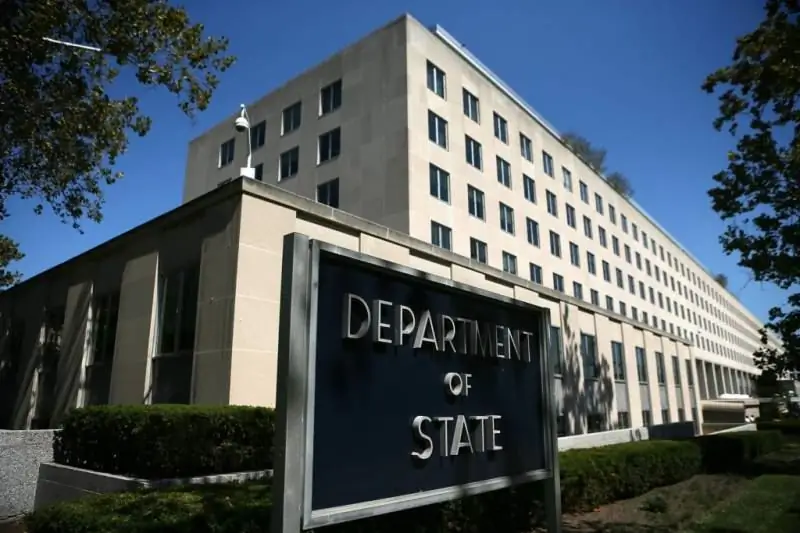
Transactions with persons involved in the new list, which so far contains 39 Russian companies and structures, are not generally prohibited, in addition to “significant” transactions (the “materiality” of transactions will be determined by the State Department according to some of its criteria, which are unknown). Sanctions can be imposed against those who make such “material” transactions with the participants in the sanctions list. For such transactions completed after August 2, 2017, companies around the world may face at least 5 out of 12 possible types of sanctions, which, in particular, include restrictions on access to loans from US banks, a ban on the sale and purchase of real estate in the United States., a ban on transactions in US dollars, etc. If a certain company falls under the sanctions, then the management of the company or its controlling shareholders may be deprived of the opportunity to enter the United States.
As noted by Alan Kartashkin, who is a partner of the international law firm Debevoise & Plimpton in Moscow, the above sanctions can be applied to any person, including Russian companies and domestic transactions that meet the materiality criteria. It is somewhat similar to the Crimean embargo, which was imposed by former American President Barack Obama. For violation of this embargo (for this, it is simply enough to work on the territory of the peninsula), any company in the world may be on the sanctions list of the US Treasury, and its assets may be blocked. The threat also extends to companies from Russia, which is why most of the large Russian corporations (for example, Sberbank) are afraid to work in Crimea.
Russia is today the second largest arms exporter in the world after the United States. Therefore, Washington can use the new sanctions as a possible blow to the main competitor. American experts note that the US authorities, with the help of new sanctions, will be able to exert pressure on third countries in order for them to reduce purchases of Russian-made weapons and military equipment. At the same time, the State Department officially denies this version. How everything will turn out in reality, only time will tell.
Rosoboronexport states that Russia and India will continue to work on the creation of a fifth generation fighter
The fact that Russia and India will continue to work together on the creation of a promising fifth generation fighter (known as FGFA) at the end of October was reported in Rosoboronexport. The Russian company emphasized that an intergovernmental Russian-Indian agreement is currently in force, and there are obligations according to which a joint project to create a new fighter is being implemented by the parties according to agreed stages and terms. This is how the Russian company reacted to the material of DefenseNews, which wrote about India's refusal to further participate in the FGFA project. DefenseNews reporters referred to the report of the Indian Air Force command. In particular, the portal's journalists noted that this decision was allegedly based on the program's non-compliance with the "technical requirements of India." Among other things, accusations were made of the low manufacturability of the new combat vehicle, greater than that of the American F-35 radar signature, and the lack of a modular engine design, which will lead to a significant increase in the cost of maintenance.
As the newspaper "Kommersant" notes in the article "They are trying to establish a contract with India," the agreement on joint work on the FGFA fighter was signed back in 2007 and was considered one of the main areas of cooperation between Russia and India within the framework of the Indian policy of Make in India. India). It was assumed that Moscow, represented by Sukhoi, would provide its developments on the promising frontline aviation complex (PAK FA), and Delhi, represented by the local company Hindustan Aeronautics, would localize the production of the fighter at its industrial sites. At the same time, further conversations, the matter practically did not move, the parties have been discussing the appearance of the future aircraft for 10 years and are trying to agree on the financial parameters of a possible deal.
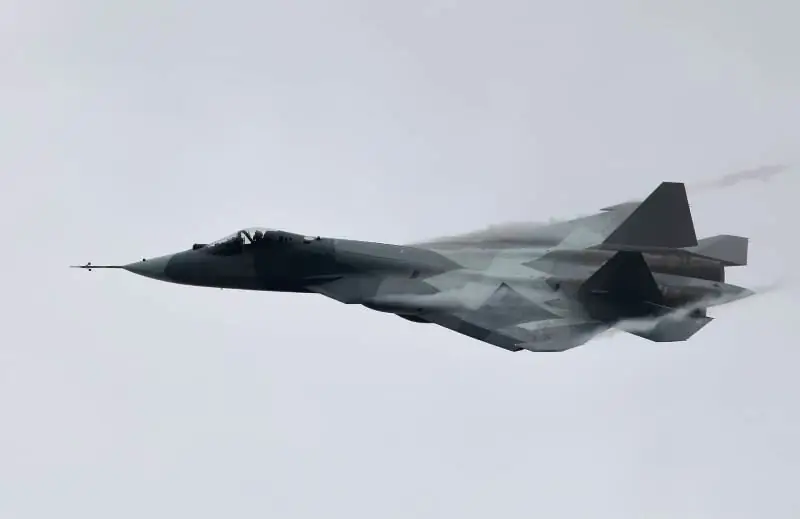
Su-57 (former PAK FA), on the basis of which it is planned to create FGFA, photo vitalykuzmin.net
At the same time, sources of "Kommersant" in the field of military-technical cooperation say that "external influence" is now being exerted on India, the Americans are especially pressing on HAL with their fifth generation F-35 fighter, but India itself is interested in cooperation with Russia - both in terms of the supply of military equipment and in terms of the localization of its production in the country. Another interlocutor of the edition, close to the Russian-Indian intergovernmental commission, confirmed the fact of “unfair competition” in India: “They will never be able to get any localization from the states, but we are ready to transfer our technologies. If they refuse, they will be guilty themselves, we will not lose anything from this."
It is expected that the issues of military-technical cooperation between the countries and industrial cooperation will become the main ones during the visit of Russian Deputy Prime Minister Dmitry Rogozin to India, which, according to Kommersant, may take place as early as December 2017. At the same time, Rosoboronexport is confident in the strength of relations between Russia and India in the area of military-technical cooperation. As an example, they cite the agreements reached on the joint production of Ka-226 helicopters in India. The assembly of the Ka-226T helicopter is planned to be established in Bangalore, the agreement signed by the parties provides for the deep localization of the production of the Russian helicopter in India, as well as the creation of the necessary facilities for its maintenance, repair and operation. Earlier, Dmitry Rogozin said that it is possible to increase the assembly of these helicopters to 200 units within 9 years, while the original contract provides for the supply of 60 helicopters from Russia and the assembly of another 140 in India at a joint venture.
Russian Helicopters made two Mi-35Ms for Mali
The Russian Helicopters holding has manufactured and delivered to the customer two Mi-35M transport and combat helicopters within the framework of an earlier concluded contract with Mali through Rosoboronexport. The helicopters and all equipment and property necessary for their operation were handed over to the customer. It is worth noting that the contract for the supply of Mi-35M helicopters was not officially announced earlier. At the same time, in September 2016, the representative of Rosoboronexport, Yuri Demchenko, said that in 2016-17 Russia would continue to supply helicopters of the Mi-24/35 and Mi-8/17 families to Angola, Mali, Nigeria and Sudan. The approximate cost of one export helicopter Mi-35M can be judged by the budget of the Ministry of Defense of the country for 2017 published by the Ministry of Finance of Nigeria, according to the document, the cost of one helicopter is approximately $ 17 million.
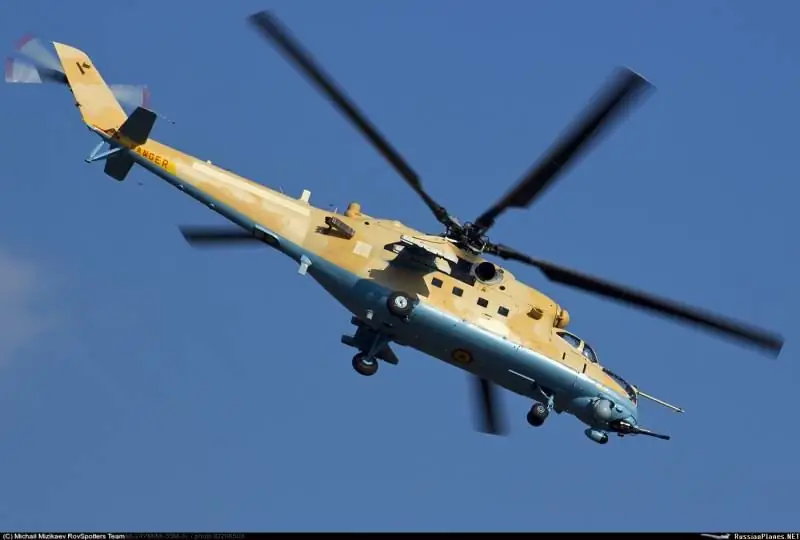
The first Mi-35M helicopter built at Rostvertol for the Mali Air Force. Rostov-on-Don, March 2017 (c) Mikhail Mizikaev
As noted by the press service of the Russian Helicopters holding, the Mi-35M is the only universal combat helicopter in the world that, in addition to effectively solving combat missions to fire enemy forces and assets, carry up to 1,500 kg of ammunition or other cargo inside the cockpit, and also 2400 kg of cargo on an external sling, or up to 8 military personnel with weapons or technical personnel to autonomous basing sites, and the helicopter can also be used to evacuate the wounded.
Holding specialists emphasize that the firepower of the updated Crocodil is 140% higher than that of the main competitors in the market. In terms of the power of small arms and cannon and unguided rocket armament, the helicopter surpasses its analogues by almost a third, which allows it to support ground troops on the battlefield much more efficiently. This is generally confirmed by Russia's leading position in the attack helicopter market. Among other things, the Mi-35M transport and combat helicopters are capable of taking off and landing from both concrete and unpaved sites located at an altitude of 4 thousand meters above sea level. The machine can be operated in the most severe climatic conditions in a wide temperature range from -50 ° C to + 50 ° C and air humidity up to 98%. These characteristics are confirmed by the actual use of Mi-35M combat helicopters in Iraq, Syria and other hot spots around the world.
Kalashnikov assault rifles will be assembled in Saudi Arabia
JSC "Rosoboronexport" and the Saudi military-industrial company signed a contract, which provides for licensed production in Saudi Arabia of Russian Kalashnikov AK-103 assault rifles and cartridges for them for various purposes. The document was signed by Alexander Mikheev, the general director of Rosoboronexport, and Ahmad al-Khatyb, the chairman of the board of directors of the Saudi military-industrial company, according to the official website of Rostec. The agreement between the countries was signed during the state visit of the King of Saudi Arabia Salman bin Abdel Aziz al-Saud to the Russian capital. During the visit, the monarch held an official meeting with Russian President Vladimir Vladimirovich Putin.
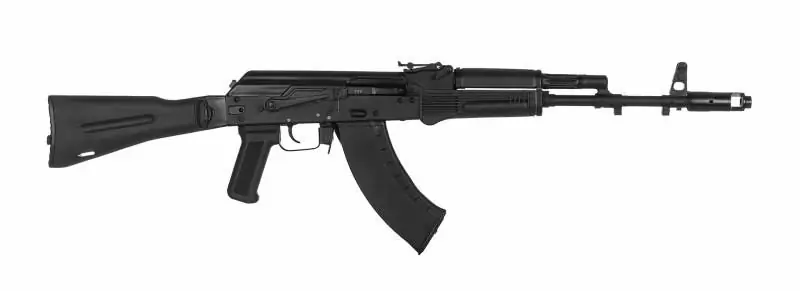
AK-103 assault rifle, kalashnikov.com
It is worth noting that in July 2017, Sergei Chemezov, who is the head of Rostec, in his interview with TASS said that Russia and Saudi Arabia signed a preliminary agreement in the field of military-technical cooperation between the countries for a total of $ 3.5 billion. Chemezov also said that Saudi Arabia set a condition for the opening of production sites in the kingdom. “We think we can share. The simplest thing is to build an enterprise for the production of small arms, the same Kalashnikov,”Sergei Chemezov noted in July.






